Beaches out of season, Uruguay part 2
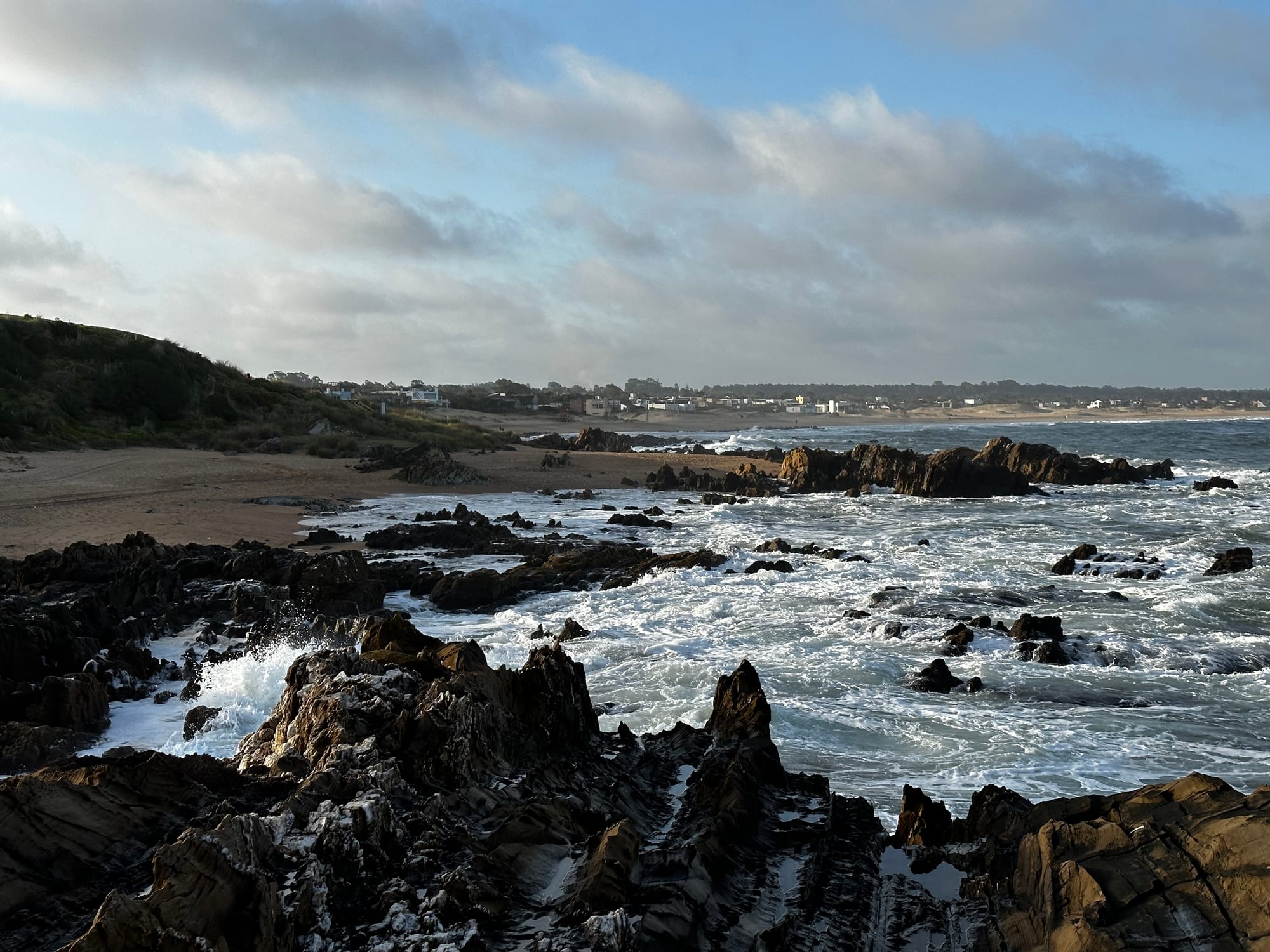
Uruguay is a beach destination. The population of the country doubles in summer beach season. From crowded and glitzy Punta del Este to the wilds of the Rocha department just south of Brazil, the beaches of Uruguay apparently have something for any type of beachgoer. But would they have something for us if we went out of season?
Our trip was in September--early spring. I read that outside of Punta del Este, many restaurants and shops would not yet be open. Other places would only be open on the weekends. We would also have the beaches to ourselves apparently. Although walking along deserted beaches sounded good, driving for miles and miles to find an open restaurant did not. Still, it seemed such a loss to visit Uruguay and not see beaches considered the best in South America.
I rearranged our itinerary to fit in a couple of nights at the beach only after I assured myself that if we stayed in José Ignacio, we would find the right balance of low season peace and a functioning tourist infrastructure. I found a place to stay that truly seemed to be the hotel of my dreams–Rizoma. (In high season, José Ignacio would be out of my price range, but out of season we could stay at Rizoma for USD$150 per night.) Although I found it on Booking.com, calling Rizoma a hotel is a little misleading. The property does have four spacious guest rooms, with private patios and gardens, but it is also a wonderful bookstore, art gallery and cafe with none of the elements dominating the others.
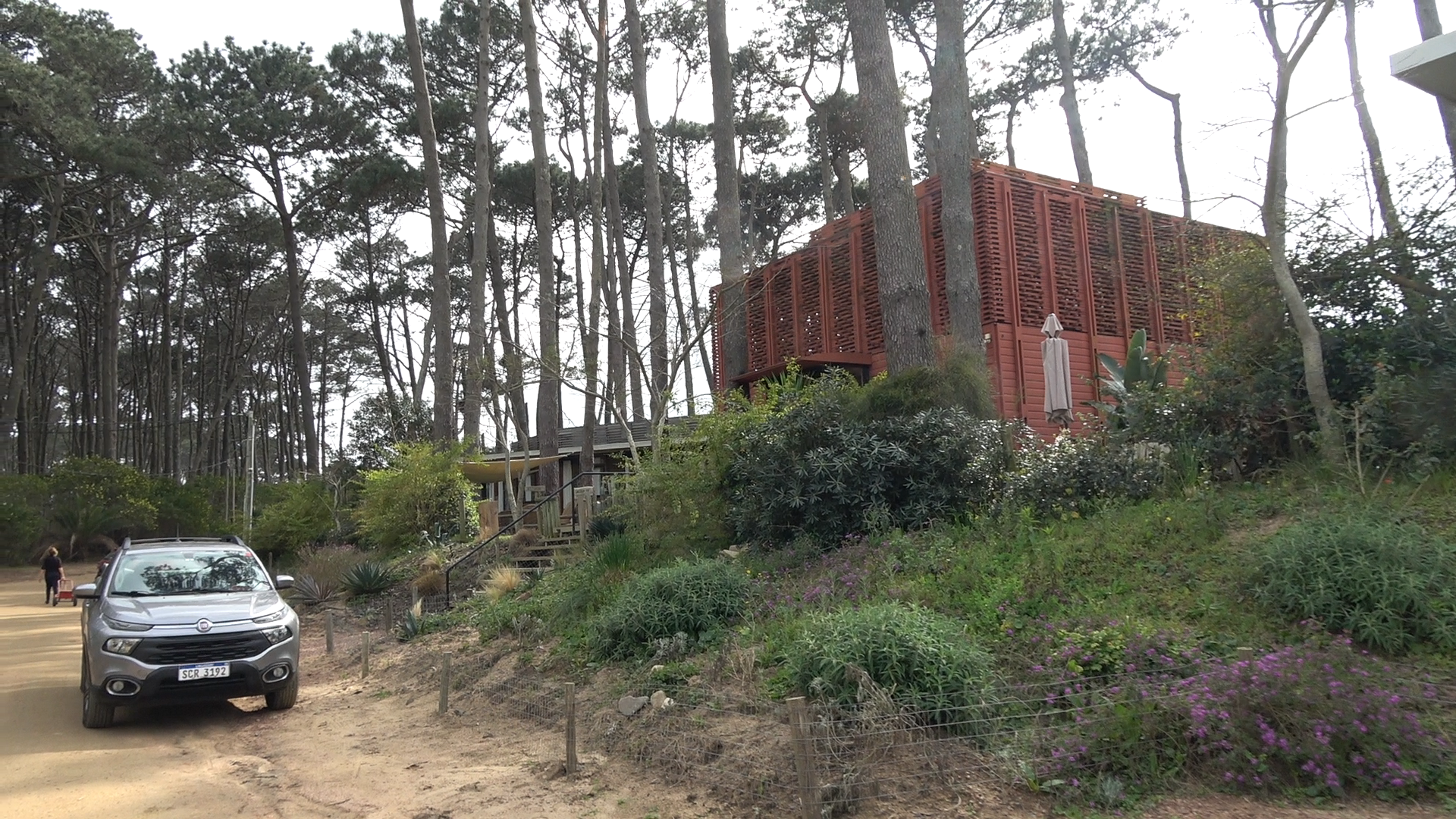
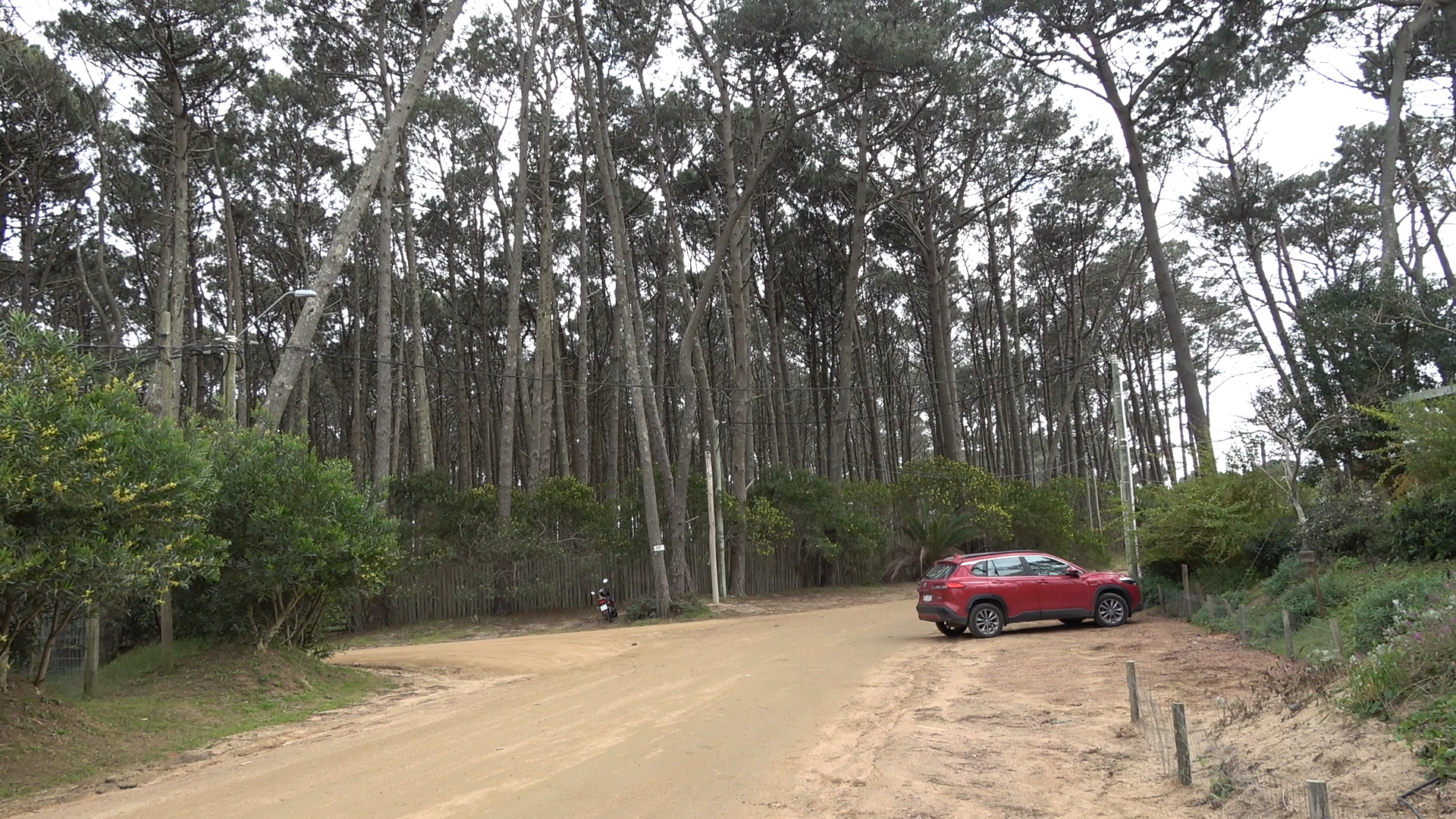
Top L to R: The wonderful Rizoma bookstore with a small but satisfying English-language section; the patio and garden for our room; our room. Bottom row: Rizoma nestled in the pines along a dirt road
Once I knew where we staying I started researching the area. I know that's a little backwards, but I knew it was a beach town not too far from Montevideo so how bad could it be? To my pleasant surprise, the internet was full of people declaring Jose Ignacio one of the best beach towns in the world. Turns out that between December 26 and January 7, José Ignacio is the place to be among the very rich who prefer a more natural beach retreat. Before we went I kept reading that this town had somehow preserved the soul of a small fishing village. That isn't true. Other than the presence of the ocean, nothing here reminded me of a fishing village--or a working class village of any sort.
The aesthetic is simple and harmonizes with nature in an oh so flawless way– which can only be accomplished at this scale with real money and power to control development. Since I've been home, I read an article on youshouldgohere.com that captures "the subdued" mood of this town where the homes large but understated --built of local materials and designed by famous South American architects.
As soon as you Google Jose Ignacio, you start to learn about Parador La Huella, a restaurant that elevates the notion of a beach shack serving simple and absolutely fresh seafood. I made reservations for dinner the only night it would be open during our stay. So that was that. We were going to have an early spring beach trip. I just hoped it would be warm. It was not.
After our stay inland at an estancia, we drove over to the coast. We arrived fairly late in the day. I'd been in contact with our hosts off and on throughout the day about our arrival time. We were the only guests arriving that day, so our hosts were trying to arrange their schedule around ours. When we got there I was surprised by the pine trees. Our part of town was set in a small pine forest. As advertised, the streets were sand. I was impressed by Rizoma's architecture, but also puzzled since it wasn't immediately clear to me where the hotel part was. Our room was surprisingly large with warm wood paneling that felt like a blend of South American and Scandinavian tastes.
It was Thursday, so our choices for dinner were limited. Our host recommended Destino Sushi and he made a reservation for us later that night. The restaurant was just over a kilometer away so we walked through the dark night on a dirt road to get there. Even though the streets had seemed utterly empty, the elegant little restaurant was full. Everyone was thin and beautiful and I felt like I was in an exclusive area on Northern California. I enjoyed dinner. (There was a dog at the sliding glass door near us asking to be let in the entire time we were there.)
At Rizoma, breakfast was included in the room price. Unlike most places, this wasn't a buffet with eggs to order--it was selections from the cafe menu which I enjoyed tremendously. The coffee was the best I had in Uruguay. After breakfast we set out to see the beaches of Jose Ignacio. The cold winds that had made our ferry crossing from Buenos Aires so miserable were back. Obviously this wouldn't be a day for swimming or watersports, but we hadn't planned on that. I had a vague notion that I'd like to see a whale. (Whales are sometimes seen from shore from June through October.) Mostly though, we had no agenda, we'd just see whatever we saw.
José Ignacio is on a small peninsula with a lighthouse at the tip. We climbed the lighthouse to look for whales and get out of the wind. There are several beaches here, but we never learned which was which. Randy was in his happy place because he was at the ocean. I was cold and not enjoying the wind.
I was intrigued, though, by hundreds of translucent eggs or egg sacks that covered the beach. Googling for an answer to the question "What the heck is this?" gave me a good reason to sit in the car out of the wind. I learned that the eggs were from Adelomelon Brasiliana a marine snail whose egg capsules are sometimes driven ashore by storms and the fierce waves they generate. I didn't learn until later that the egg capsules that end up on shore are destined to feed shore birds or just rot in place. I'm glad I didn't know that day, because I saw a dead seal and a dead penguin on other beaches. (I don't know if the weather over the Atlantic was typical of September or if we just happened to see the aftermath of a particularly bad patch of weather, but it was depressing that the first wild penguin I ever saw was dead.) I didn't need another sign of death and decay front and center in my mind as we explored empty towns with a slightly apocalyptic feeling.
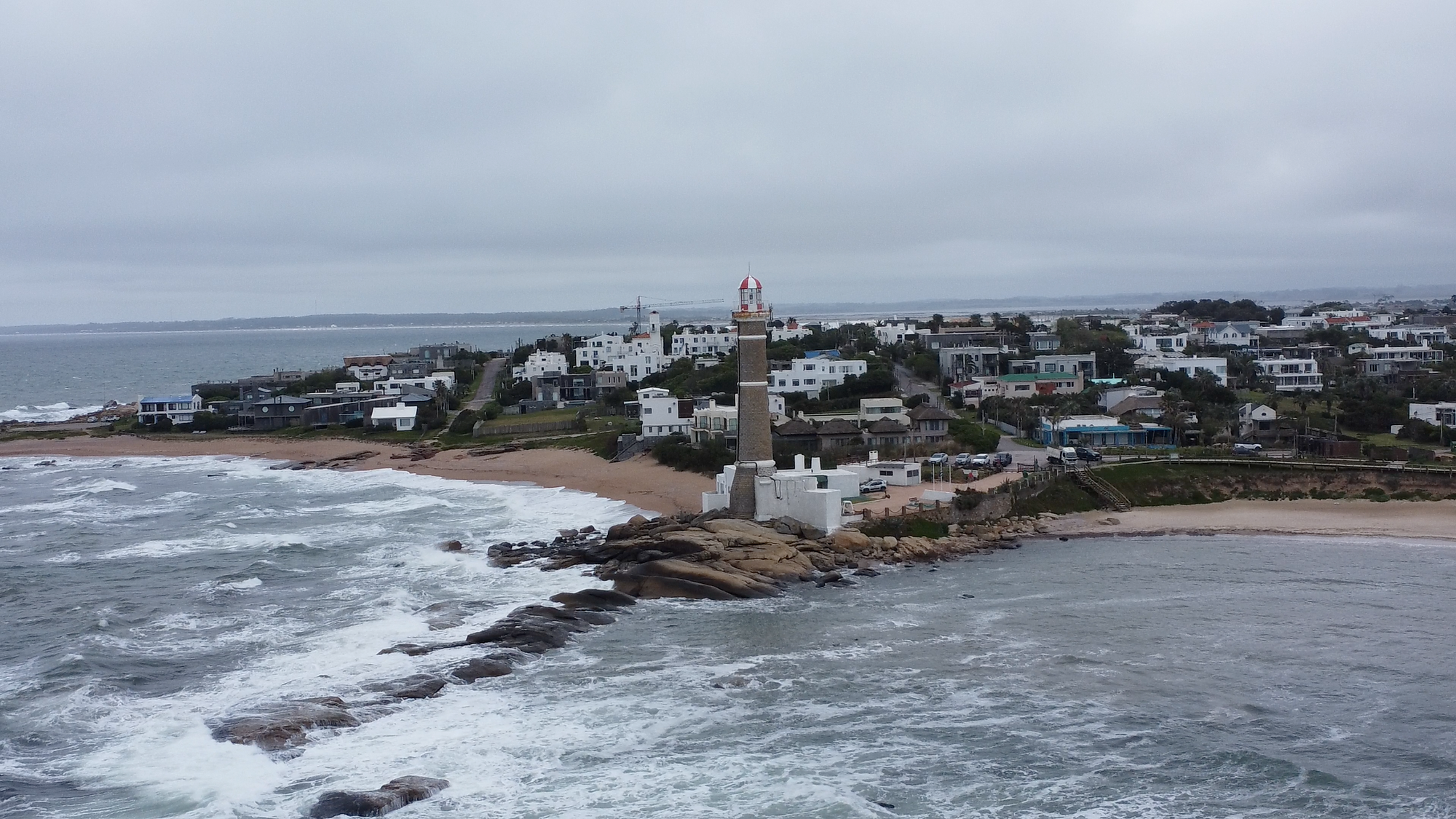
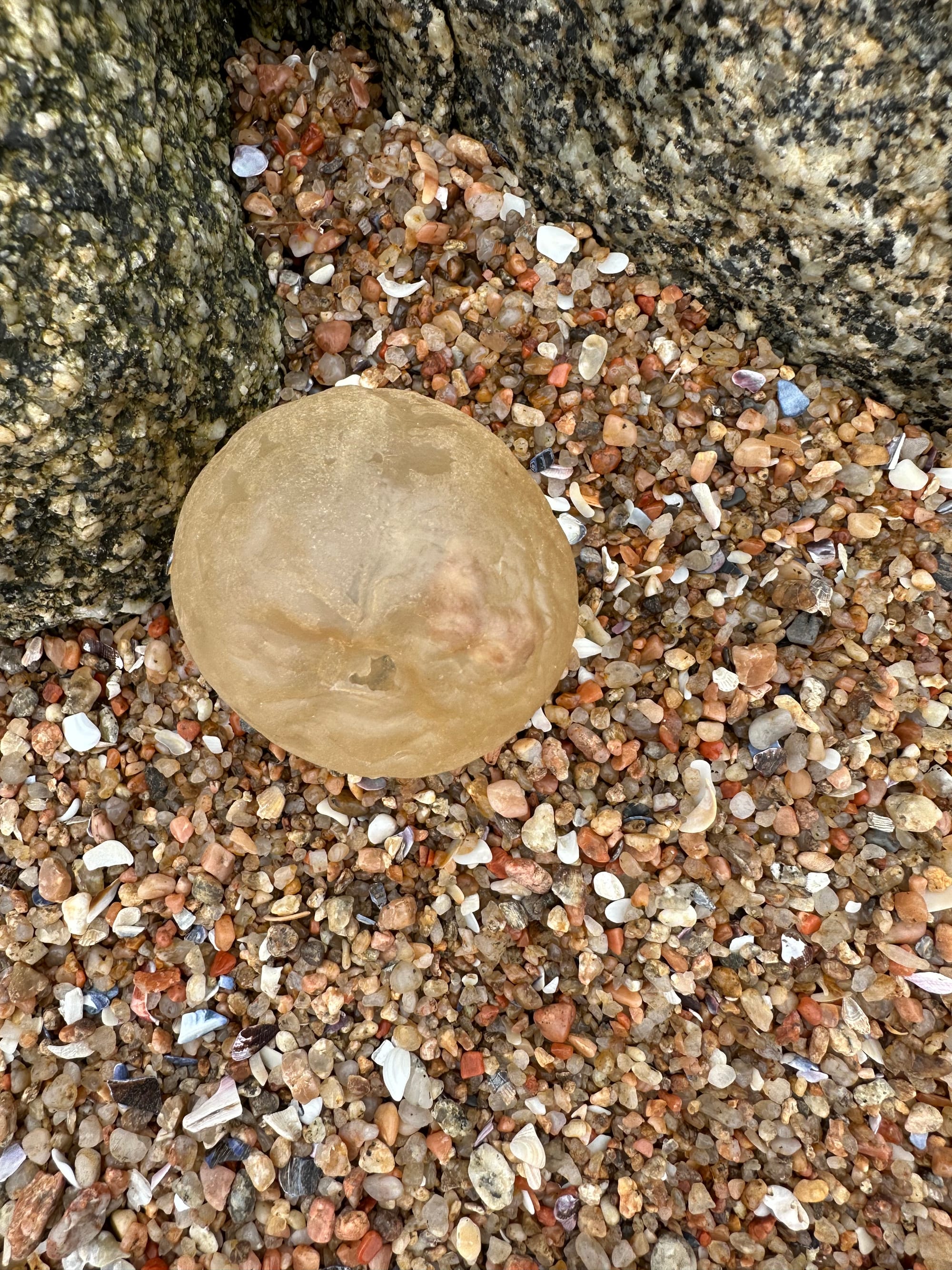
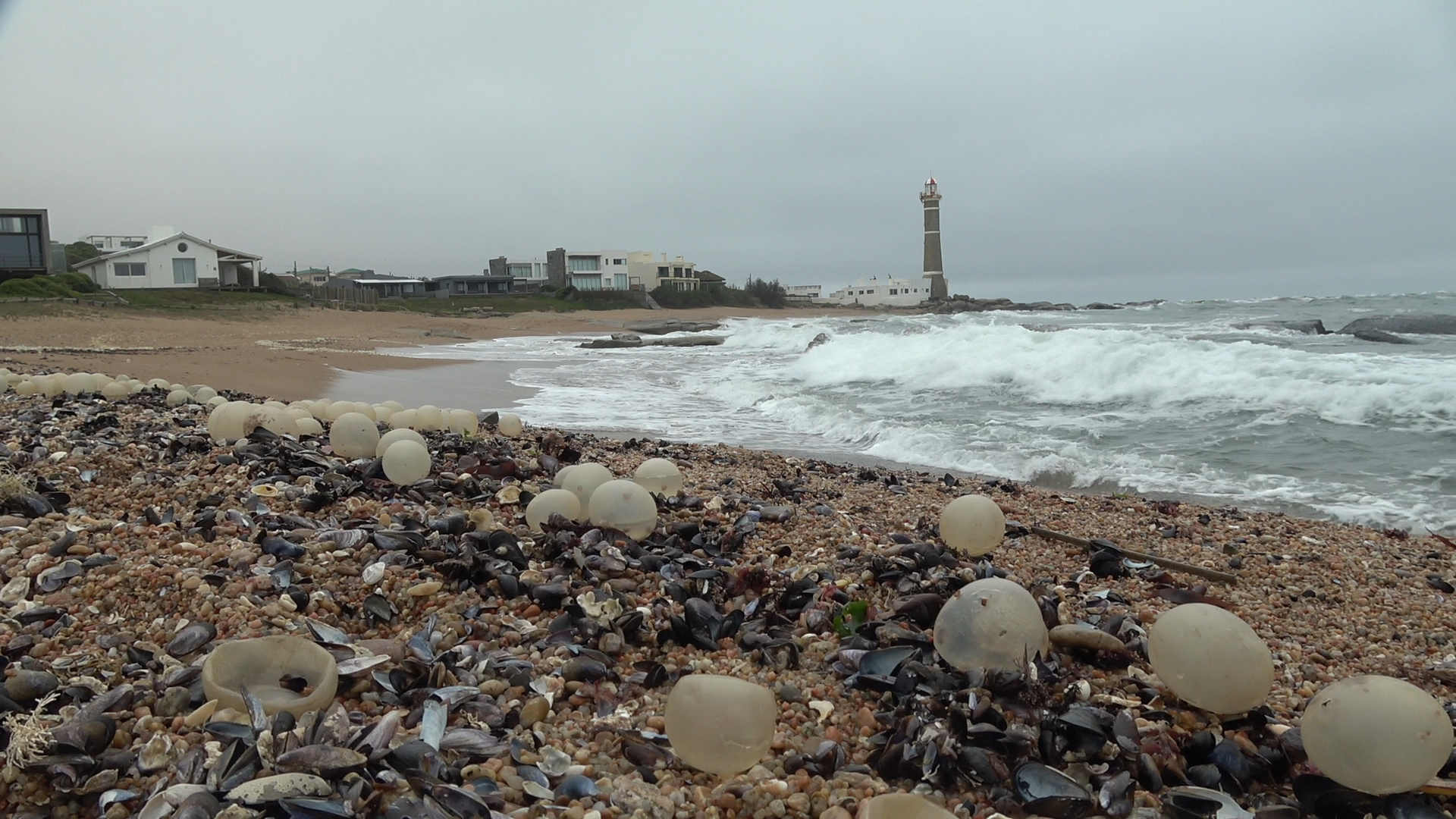
Mystery orbs on the beach at José Ignacio. (Snail eggs)
We visited one small gift store that was open along the beach to the northeast of the lighthouse. The woman who ran it was friendly, and if I had been in the market for a beach trinket, I would have bought something.
The overall feeling that morning was cold, dreary and lonely. José Ignacio is attractive. It is almost all just well-designed houses and quiet streets, but there is definitely an air of unreality about it. We did cross paths with another American family. I don't know who they were, but when I tried to start a conversation, neither of the adults responded. I got the feeling that they at least thought I was intruding on their privacy. Maybe they were famous and I was. Or maybe they were just snooty, or having a fight. Who knows, but I was absolutely ready to see another town.
I'd read that whales were often spotted off the coast at La Paloma, so we moved up the coast. We stopped briefly at Laguna Garzon for Randy to get interesting drone shots of the circular bridge and for me to look for birds. He was successful, but I saw a dead penguin on the beach.
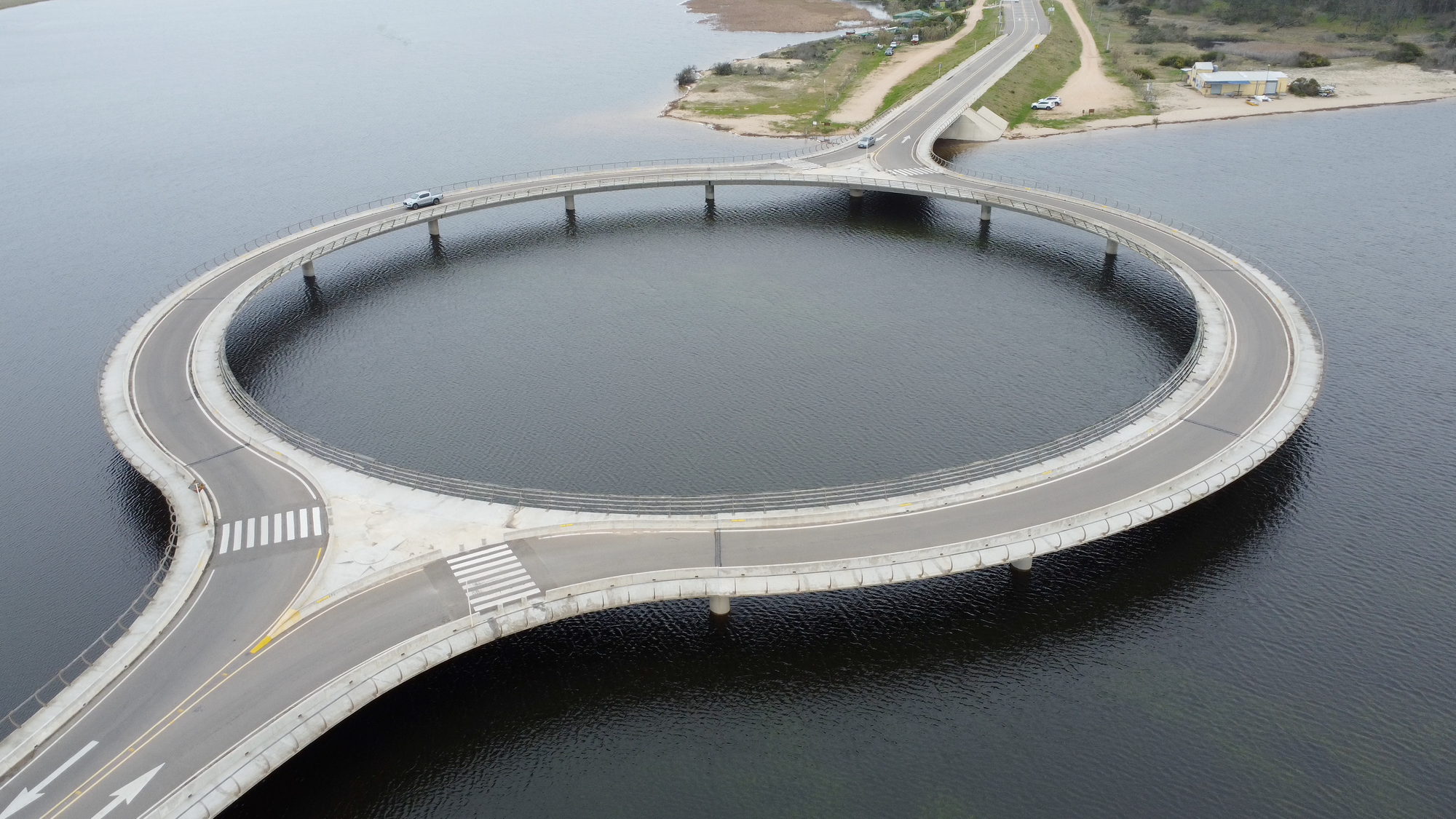
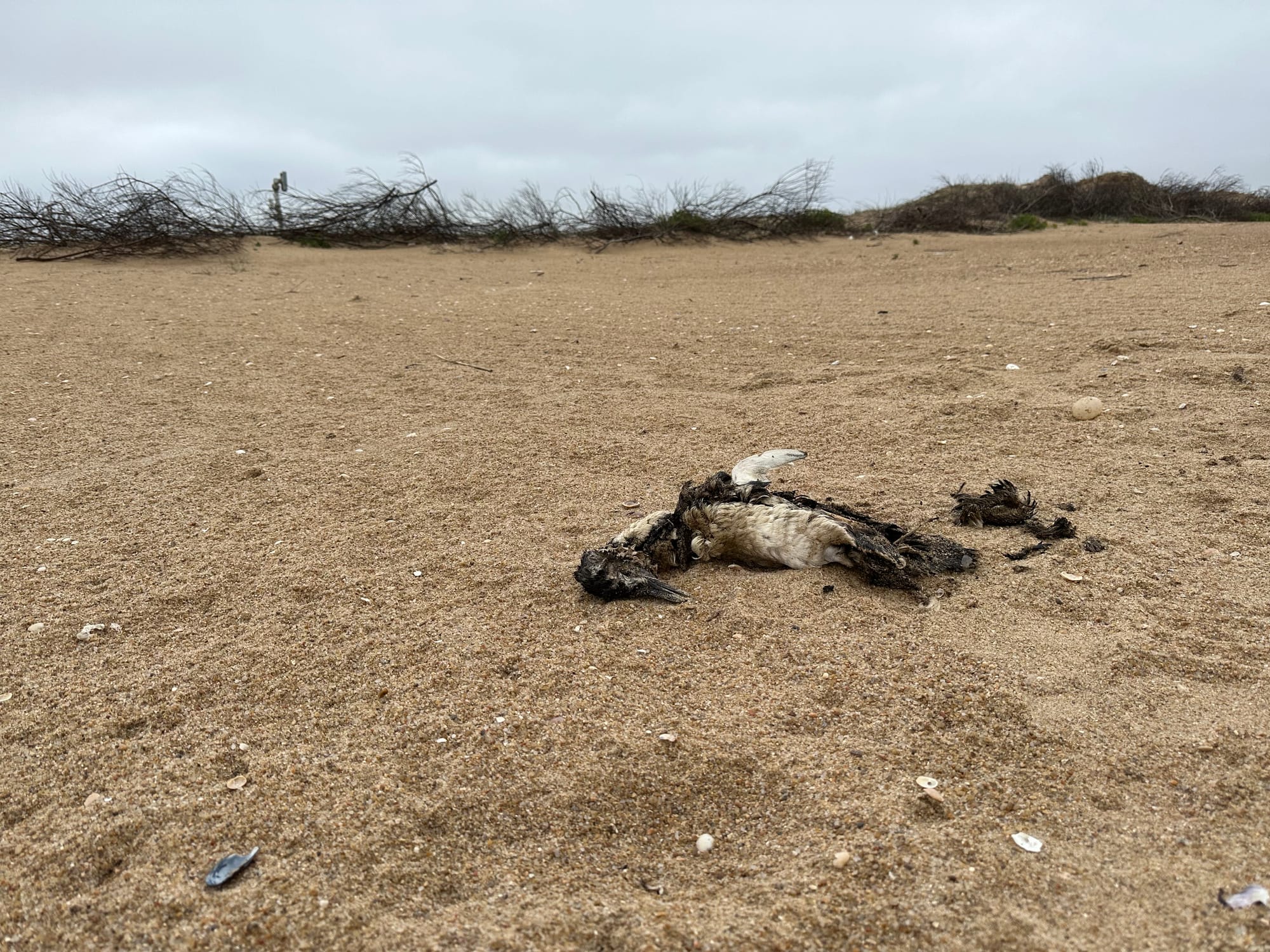
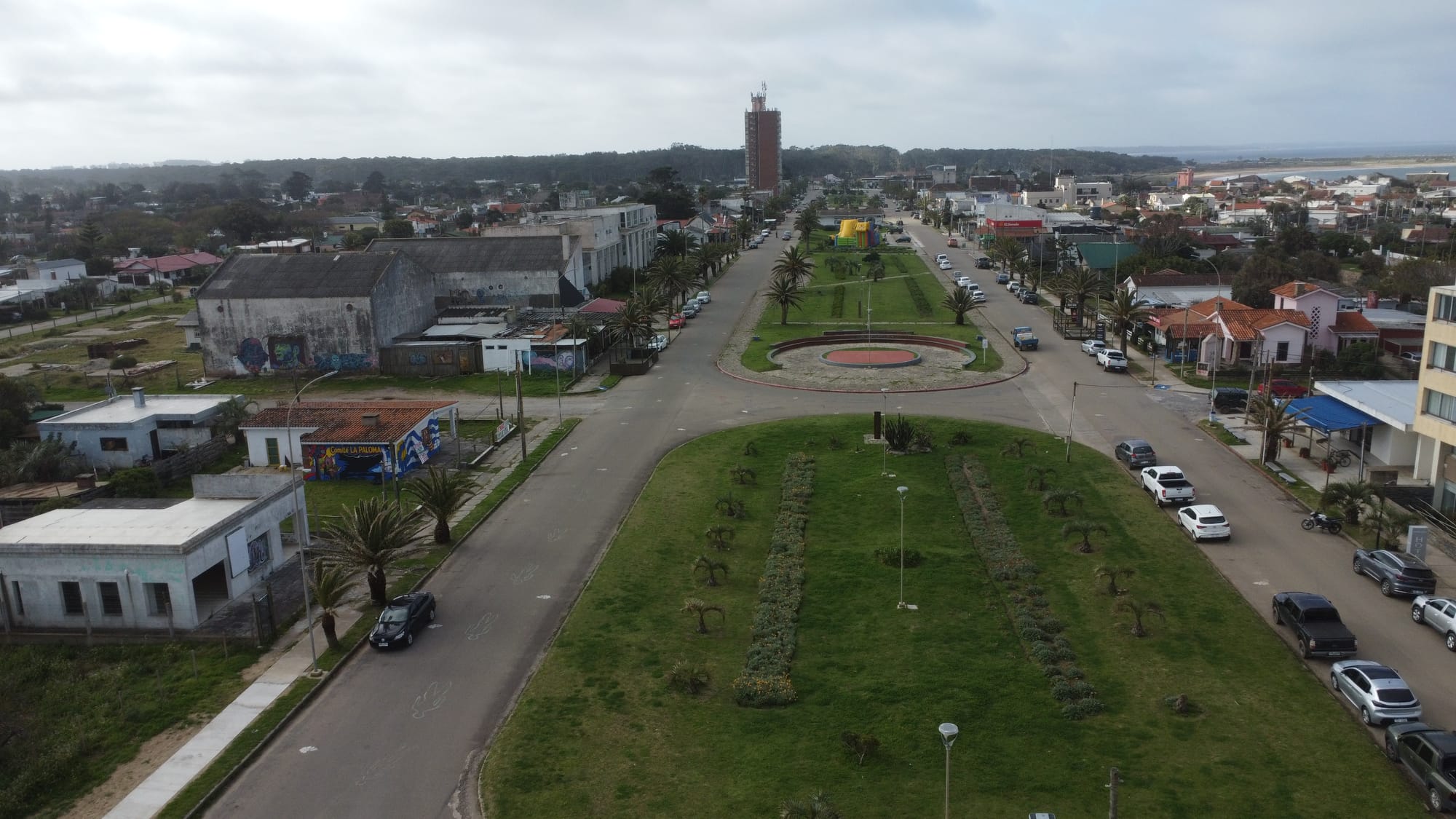
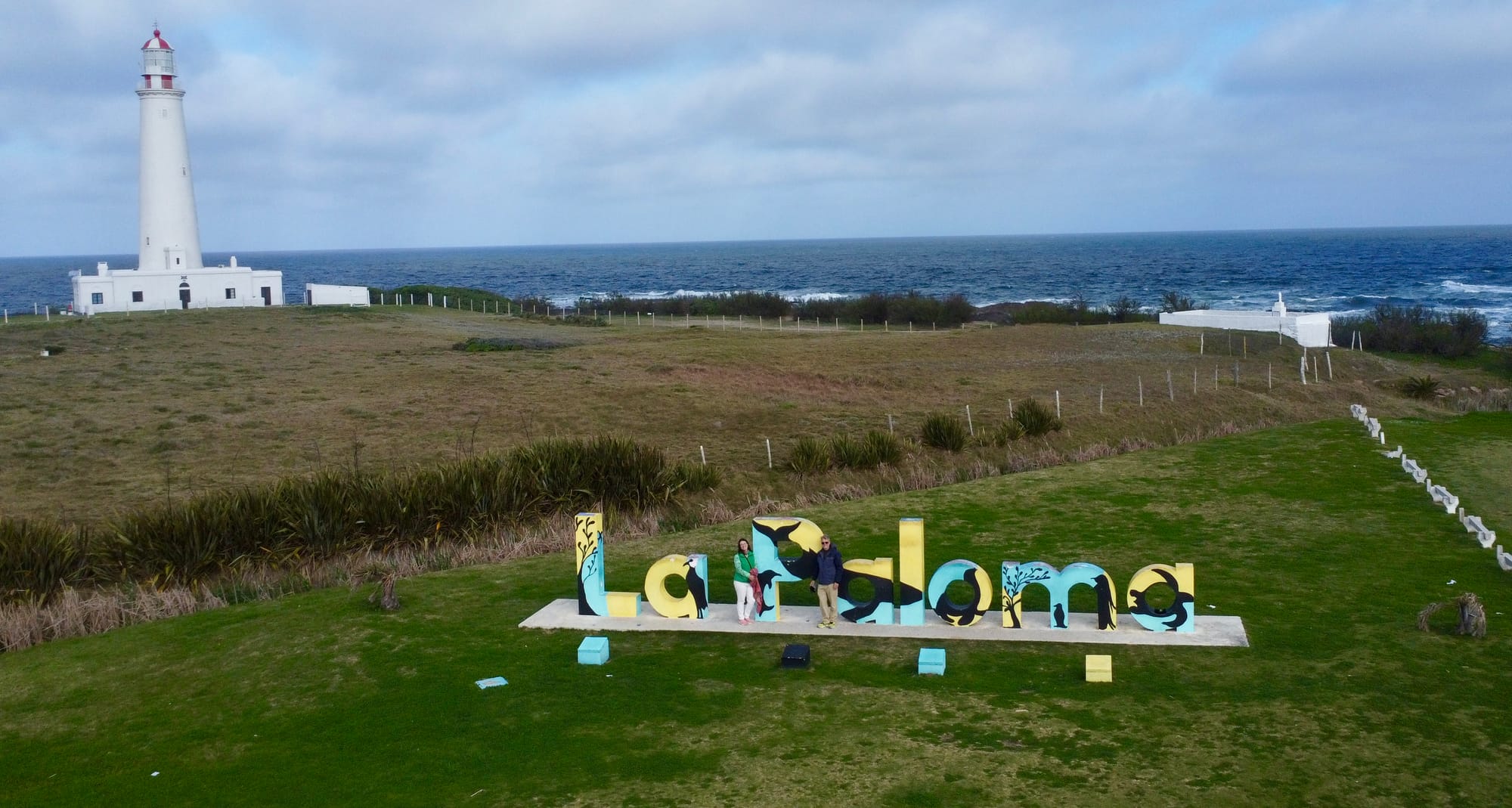
La Paloma was slightly livelier than José Ignacio--there were skateboarders out. It was a less attractive town, but one that felt more real and organic--less controlled and designed. We did not see any whales, and I wanted to fit in one more town--La Pedrera--before we headed back for dinner because I was intrigued by my guidebook's description. It was supposed to be somewhat like Cornwall and full of hippies.
La Pedrera was our favorite beach town. There was a general health food and granola feel, and I smelled pot for the first time in this country where pot is legal. (I smell it everyday back home even though no one in our family smokes.) The weather had improved a little. It was still cold and windy but the sun had at least come out. Every beach we saw that day was interesting and worth visiting, but I loved the rocky cliffs here the most. There were more people out on the beach, too, which meant the town felt more alive.
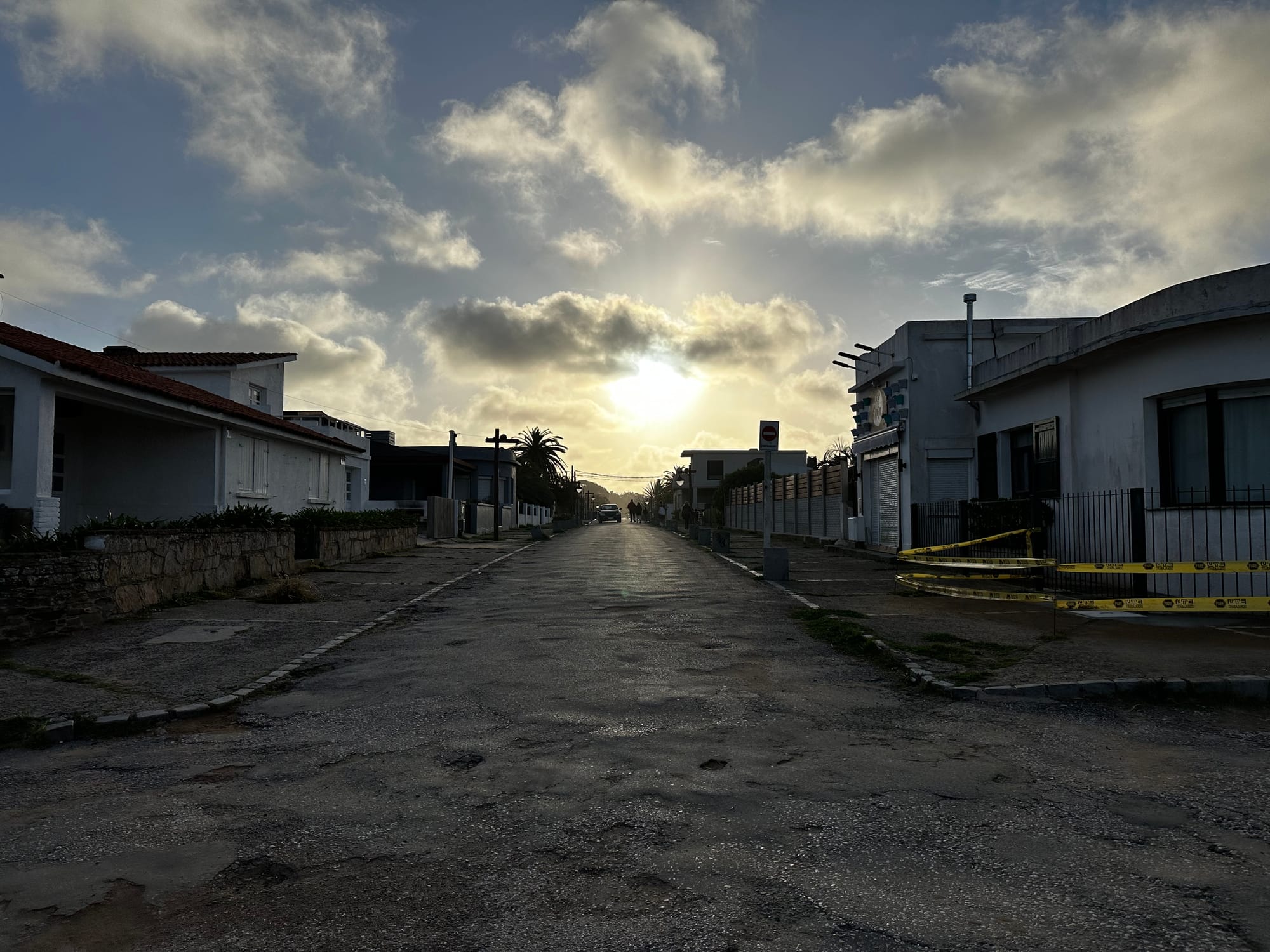
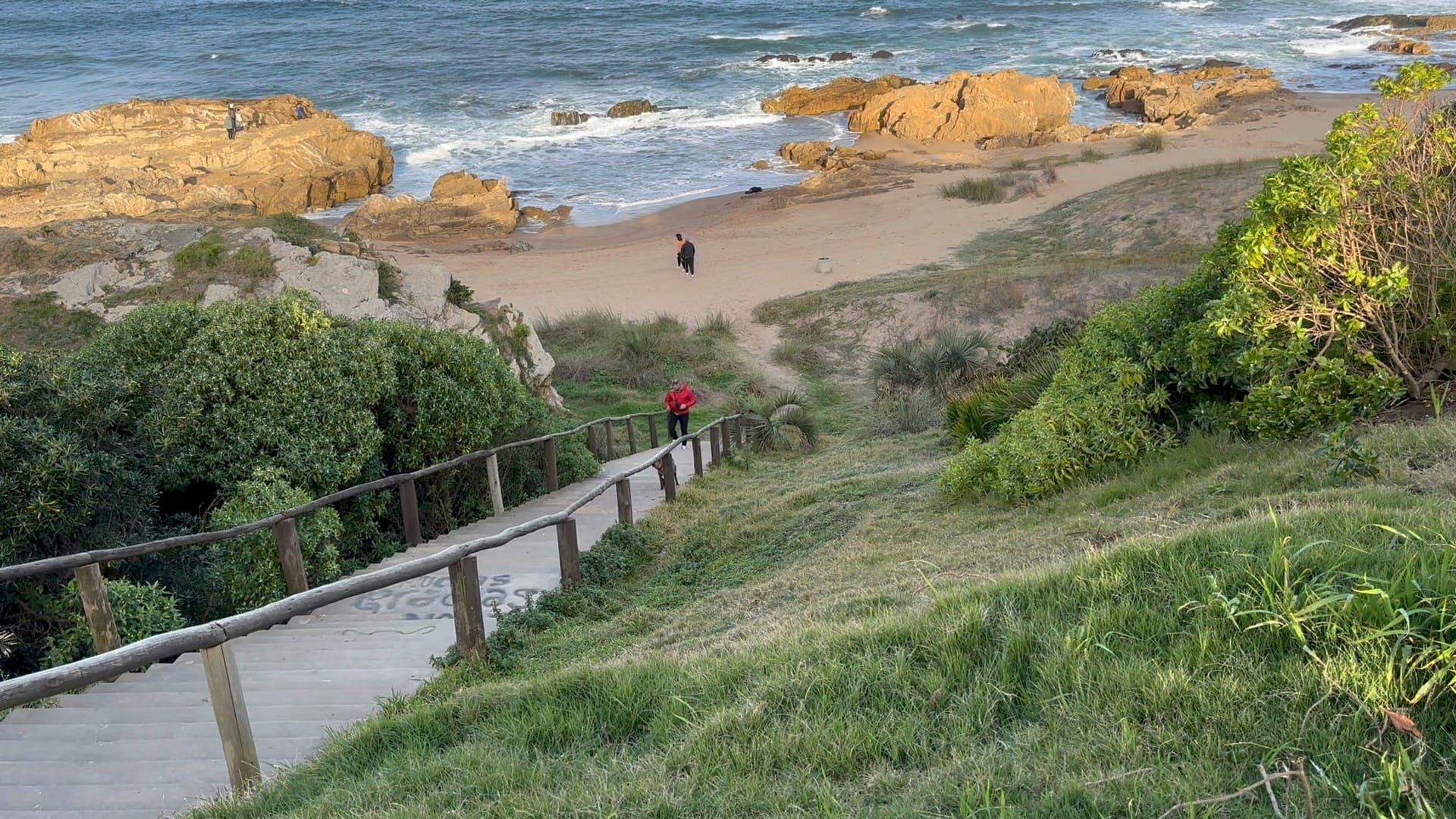
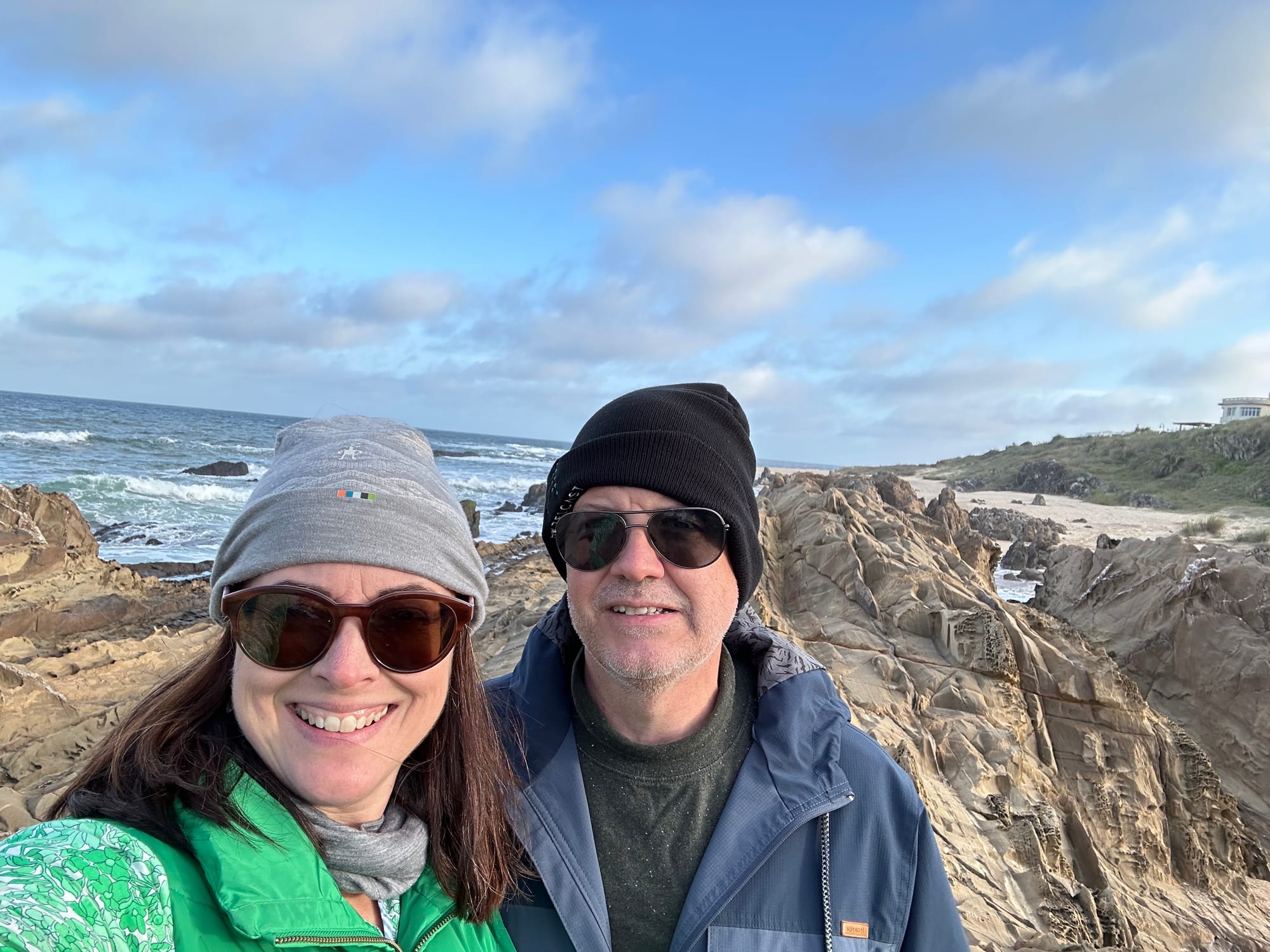
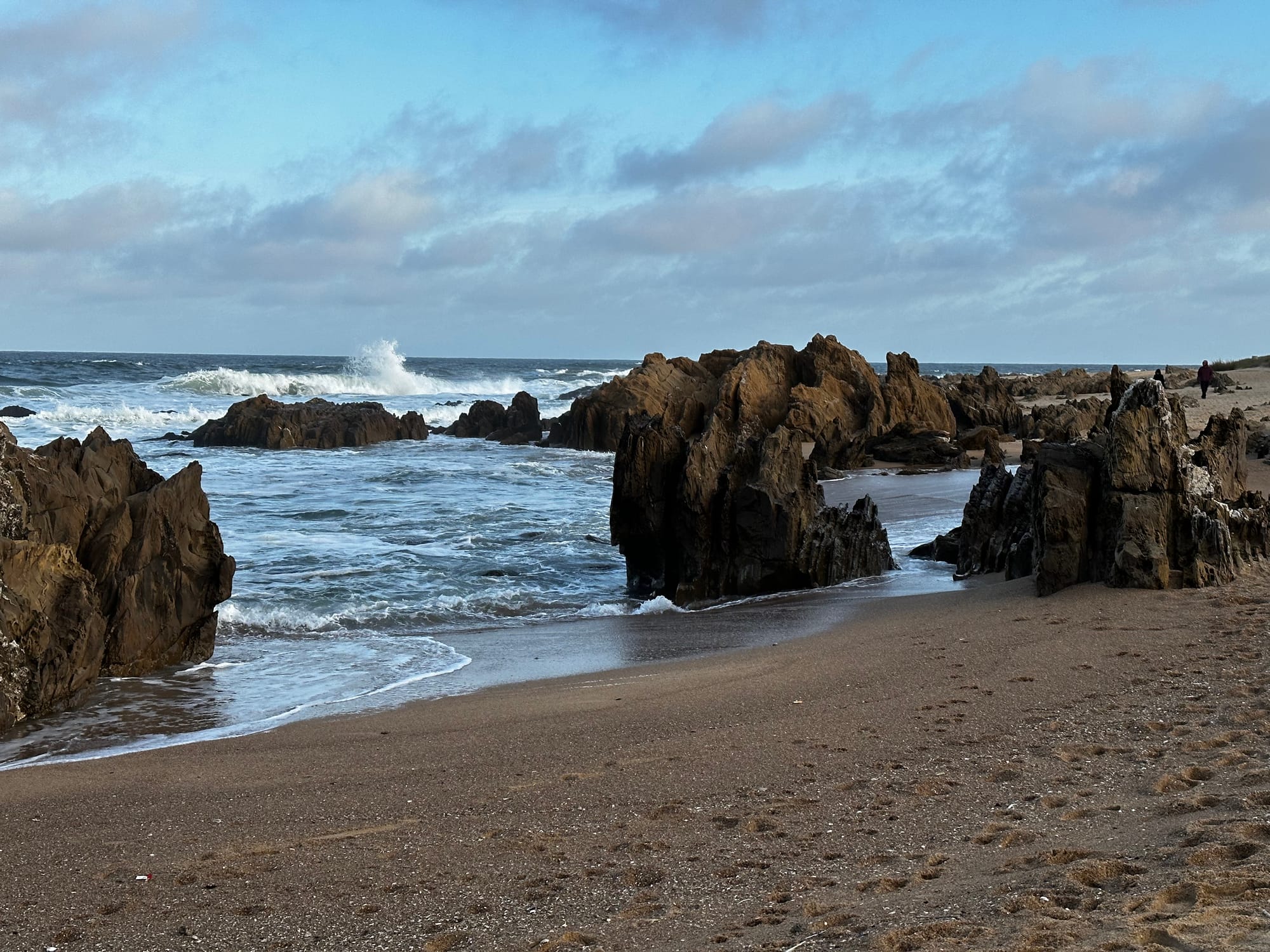
It was late afternoon by this point so we needed to head back to clean up for dinner at La Huella. Once again, even though the town seemed empty, the restaurant was packed. It was a cold night but with the open flame in the kitchen and a huge wood burning stove heating the dining room, I was happy and toasty. We each started our meal with a traditional after dinner drink, a Rusty Nail, which is a cocktail of whisky and Drambuie. Although that isn't a new drink, it was new to us and it was a perfect drink after a cold day outside on the beach. Our dinner was a grilled branzino. Everything about this meal was enjoyable--the setting, the service and the perfectly cooked food.
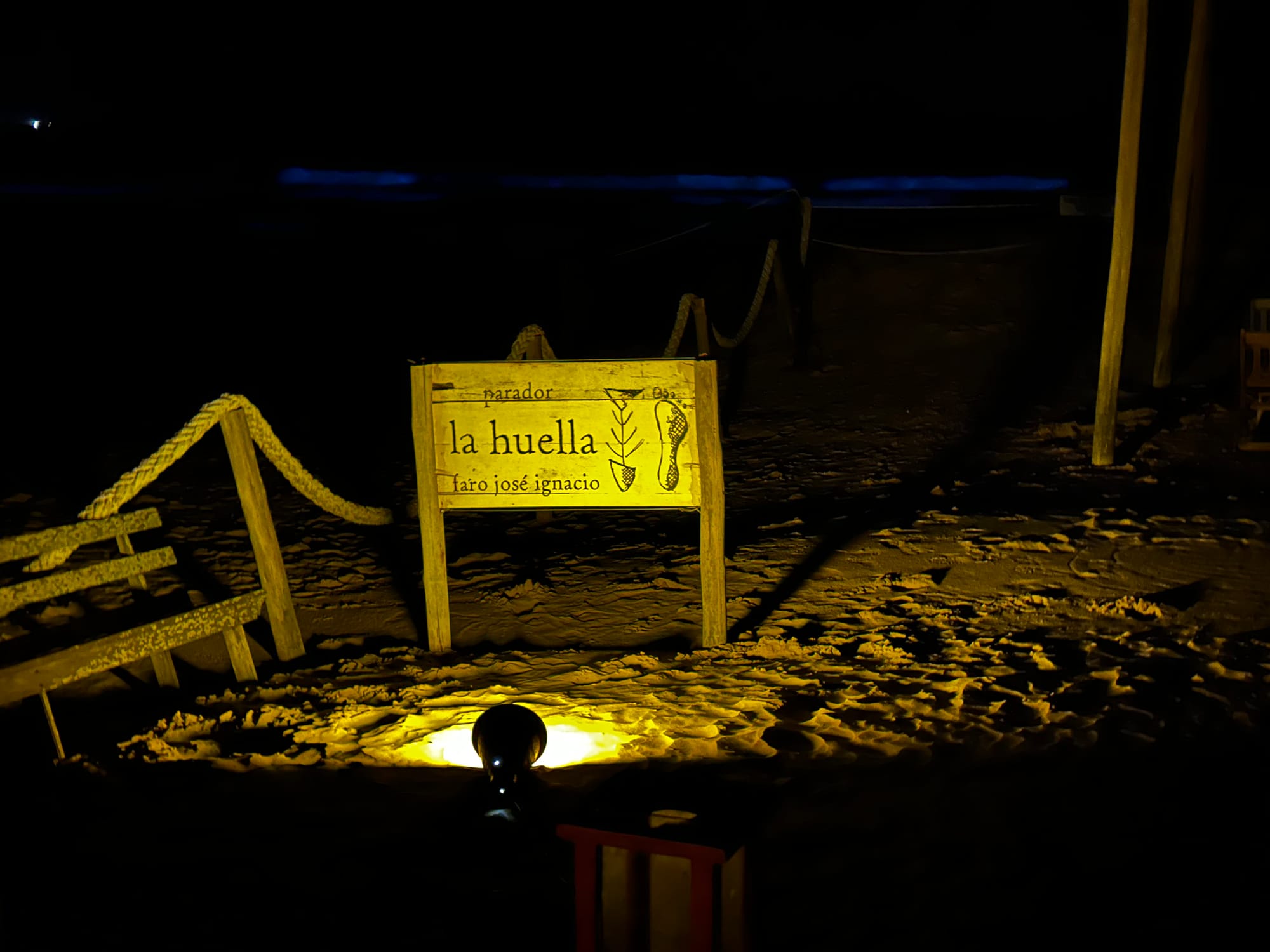
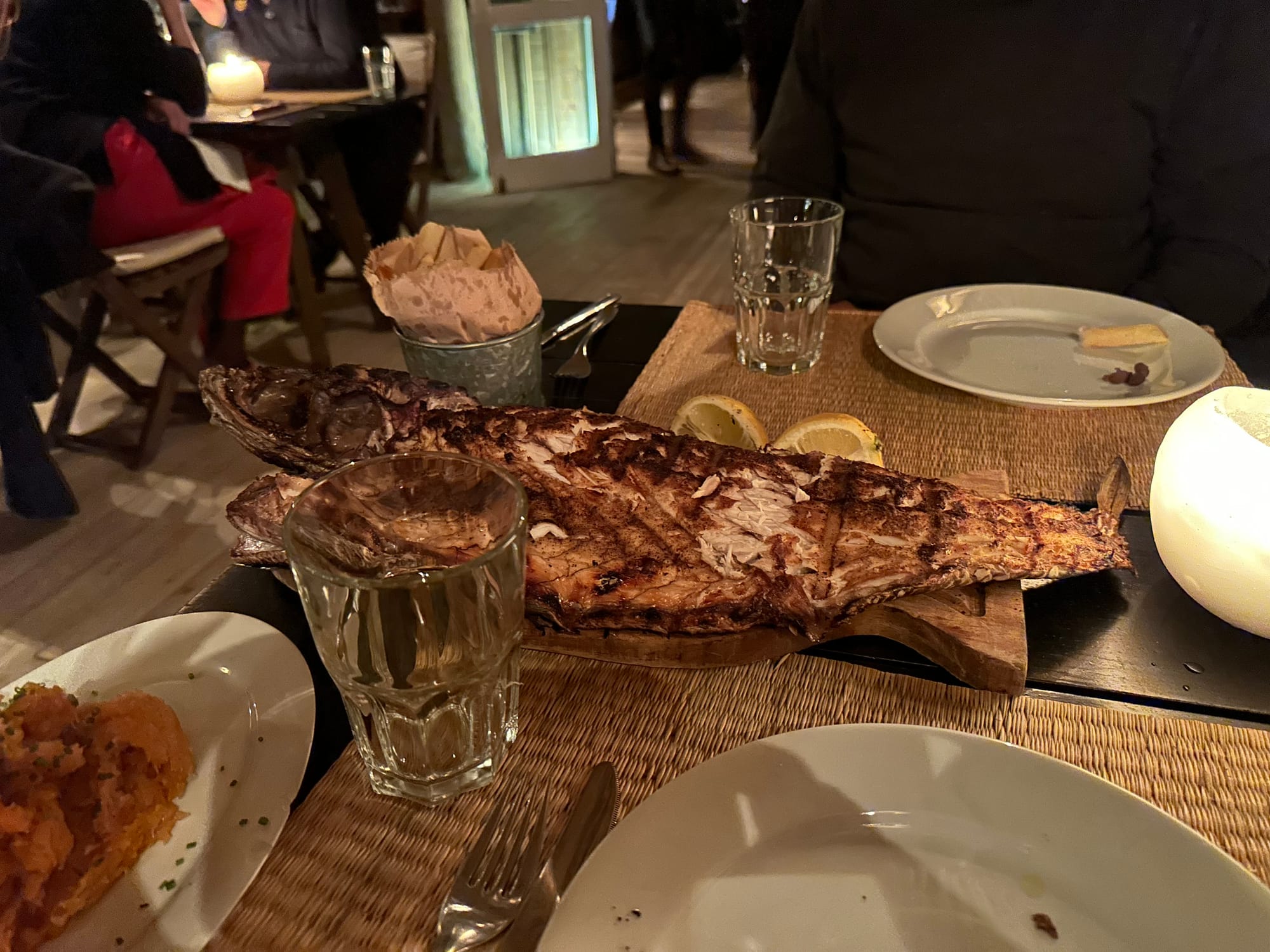
This next morning we had more beach town to see-Punta del Este. I had seen it compared to Rio, Miami and Monte Carlo. I've only been to Miami so I don't know about the other two, but I can say I see a resemblance to Miami. We had a pleasant lunch on the water at Virazón, and we found a great European-style bakery, Lady Marion, where Randy got gluten-free mince pie and I got wonderful apple strudel. We had an interesting time exploring the eclectic Museo Del Mar in La Barra, a smaller town that blends rather seamlessly into Punta del Este.
I would not travel to Uruguay to go to Punta del Este. It seemed too much like other beachfront cities to warrant a special trip, but if I were to find myself in Uruguay at the beach out of season, I would strongly consider staying in La Barra. It's closer to the density of Punta del Este, so even out of season there is plenty to see and do, but still has more local character.
Was it worth it to see the beaches of Uruguay out of season? Yes, I think it was. I'm happy I tried La Huella, although no beach restaurant will ever surpass it I'm afraid so it may have set me up for many disappointments. Randy loved our day in the wind and cold watching the water for whales. If I had seen a whale I would have said I loved that day too. As it was, I kept thinking how nice everything would be if it were just a little warmer, and if just a few more people had been about. Rizoma was lovely as it was, but the cafe was clearly built to welcome many more people indoors and out. When we decided to add a short beach trip to our Uruguay vacation, we decided to skip the wine country of Uruguay. If we go back, I would probably see the wine country and, if it is even just a little later in the spring– say between October and March, I'd go to the beach too.
